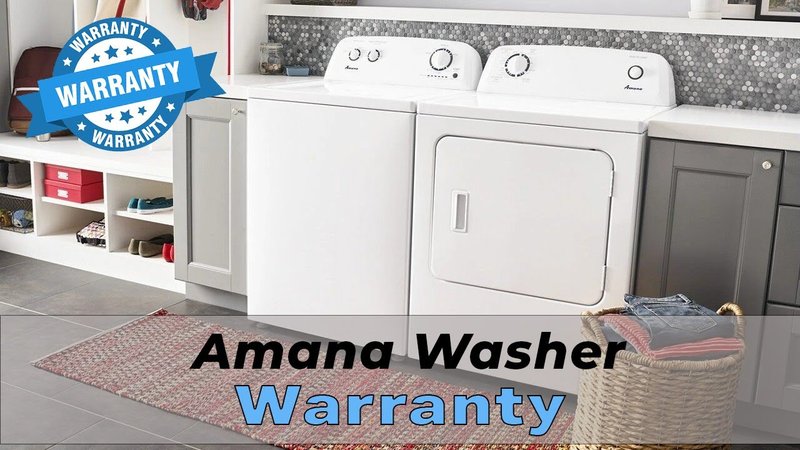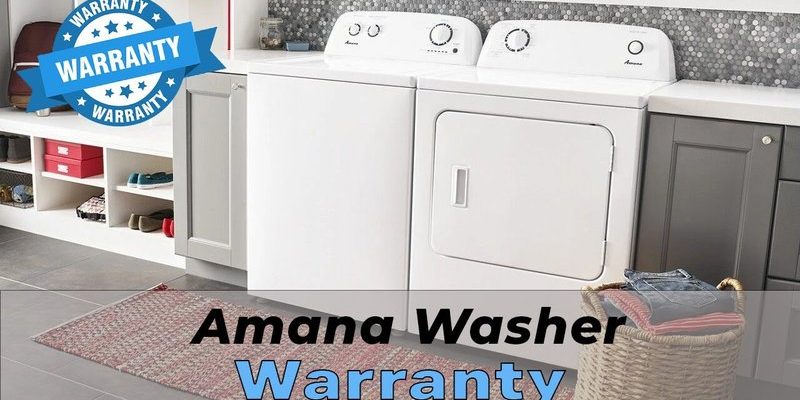
Honestly, many people don’t think about warranty transfer until they find themselves in the middle of selling or buying secondhand appliances. Amana, as a brand, is known for reliable laundry machines, and their warranties are part of that peace of mind. But here’s the thing: not all warranties are created equal, and the fine print often decides if the warranty is tied to the person who bought it—or to the appliance itself. Let me explain how this works specifically for Amana laundry appliances and what you should keep in mind before passing your washer or dryer onto someone else.
Understanding Amana’s Warranty Terms and Conditions
First off, the most important piece of the puzzle is Amana’s official warranty policy. The warranty on Amana laundry appliances typically covers repairs or replacements for parts or labor that fail within a set time after purchase—usually something like one year for parts and labor and maybe longer for specific components like the motor or drum. But the key question is: *who* benefits from that coverage?
Amana’s warranties tend to be registered to the original purchaser. That means when you buy a new Amana washer or dryer, the warranty is linked to your name and address. This connection often means the warranty isn’t automatically transferable because the warranty serves as a contract between the manufacturer and the original buyer. Imagine buying a plane ticket under your name and trying to give it away—the airline expects the named passenger to use it.
So, if you’re selling your appliance, the new owner might end up with no official warranty coverage—even if your machine is still within the original warranty period. This can be disappointing, especially since selling your appliance for less because it’s “out of warranty” is a tough sell.
When Can You Transfer an Amana Warranty?
Here’s where things get a little more hopeful. While *most* warranties with Amana laundry appliances aren’t automatically transferable, there are exceptions or specific cases when a transfer might be possible. For instance, if you registered the warranty online and the paperwork allows for transfer, you might be able to contact Amana’s customer service to request the change of ownership.
However, this process isn’t guaranteed, and it often involves proof of sale, serial numbers, and other documentation to ensure the new owner isn’t just randomly benefiting from the warranty. It’s a bit like a second-hand software license—there are rules that must be followed.
Additionally, some retailers may offer extended warranty plans or service contracts that *can* be transferred, but these are separate from the manufacturer’s basic warranty. So if your appliance came with an extended service plan, check its terms carefully. You might be able to officially transfer that coverage, but it depends on the specific plan, not Amana’s standard warranty.
Why Amana’s Warranty Transfer Policy Matters to Buyers and Sellers
From the seller’s perspective, knowing whether the warranty transfers can make or break the deal. If you’re trying to sell an Amana washer or dryer, being upfront about the warranty status is essential. Buyers often want that warranty as a safety net against costly repairs, so if you’re clear that the warranty can’t transfer, they won’t expect it—but they might expect a price drop.
For buyers, it’s good to be aware going in that warranty transfer might not be an option. This influences whether you want to buy used or prefer a new machine with full warranty coverage. Sometimes, paying a little extra for a new unit with a fresh warranty feels safer than gambling on a secondhand appliance whose warranty is void or non-transferable.
How to Check If Your Amana Appliance Warranty Is Transferable
If you’re unsure about your specific machine’s warranty status, there are a few ways to check before you sell or buy:
- Locate the model and serial number: Usually found on the inside door frame of washers or dryers. This info helps verify warranty status with Amana.
- Review original warranty paperwork: Look for any mention of transferability in the fine print.
- Contact Amana’s customer support: Explain your situation and ask if your warranty can transfer to a new owner.
- Check retailer or extended warranty documentation: If you have an additional protection plan, those terms might differ.
Doing this homework saves headaches later on and helps set clear expectations for both seller and buyer.
What Happens After Warranty Transfer—or If It’s Not Transferable?
If Amana does allow the warranty transfer, the new owner should register the appliance under their name. This updates the records and makes sure claims, repairs, or troubleshooting requests go smoothly—no back-and-forth over ownership details. It’s like syncing your remote control with a TV; if they don’t “pair,” the remote won’t work properly.
But if the warranty *isn’t* transferable, that doesn’t mean the appliance becomes useless or unprotected. Most Amana appliances are built with reliability in mind and often come with user manuals that include troubleshooting tips. Also, many local repair shops can help maintain or fix these machines affordably, even without a warranty. Sometimes, a bit of DIY troubleshooting or resetting settings can keep your washer or dryer running longer than you expect.
Alternatives to Warranty Transfer: Extended Warranties and Service Plans
Since transferring the original warranty can be challenging, some folks look to alternative options to protect the new owner:
- Extended warranties: Some retailers allow you to purchase extended protection plans that cover repairs beyond the manufacturer’s warranty. These may be transferable depending on the provider.
- Home warranty plans: These broader service contracts often include coverage for laundry appliances and can be transferred if you sell a home.
- Third-party insurance: Some companies offer standalone appliance insurance on used machines.
These options often come with their own rules and costs, but they can give buyers more confidence when purchasing a used Amana laundry appliance without a manufacturer’s warranty.
Taking Care of Your Amana Appliance to Protect Its Value
Here’s a little secret: the better you take care of your Amana washer or dryer, the less you’ll worry about warranties. Regular cleaning, troubleshooting minor glitches early, and understanding how to reset or pair settings can extend the life of your machine.
For example, if your dryer isn’t heating properly, sometimes a simple reset or cleaning of the lint filter can fix the issue—no warranty needed. This proactive care adds value to your appliance, making it more attractive to buyers even without a transferable warranty.
When it’s time to sell or hand off your machine, documenting your maintenance efforts also reassures the new owner that the appliance is in good shape.
Wrapping It Up: What You Really Need to Know
So, can you transfer warranty on an Amana laundry appliance to a new owner? The short answer: usually, no. Amana’s standard warranties are typically tied to the original buyer and not designed for transfer. But that doesn’t close the door completely—some special cases, extended plans, or retailer policies might allow it.
If you’re selling or buying, being honest and informed about the warranty status helps everyone avoid surprises. Remember, your Amana washer or dryer still holds value through solid build quality and your own care. Plus, there are always options like extended warranties and repairs to keep things running smoothly.
At the end of the day, warranties are just one piece of the puzzle. Knowing what’s covered, what’s not, and how to handle troubleshooting can save you time and money—no matter who owns the appliance.
